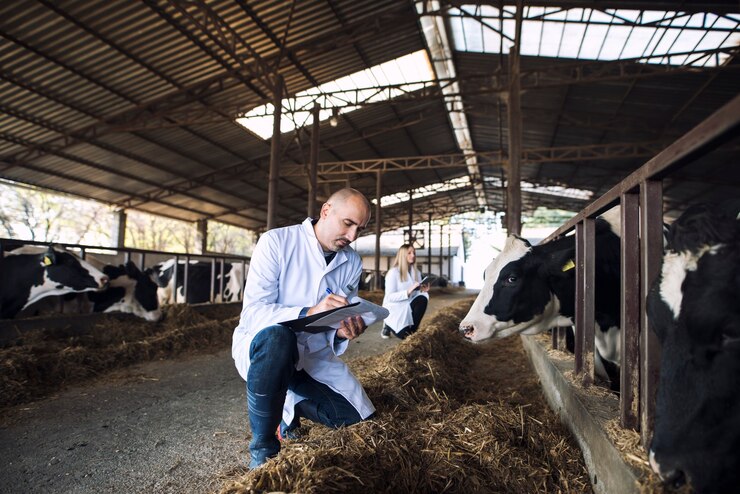Livestock feeding is a critical aspect of animal husbandry, influencing the health, productivity, and overall well-being of livestock. Large livestock feeders play a pivotal role in providing a steady and nutritious supply of feed to animals on farms and ranches. In this article, we’ll delve into the importance of large livestock feeders, their types, and the factors to consider when choosing the right feeder for your operation.
Importance of Large Livestock Feeders
Large livestock feeders are essential for efficiently managing feed resources and ensuring that animals receive the nutrients they need to thrive. Whether it’s cattle, sheep, goats, or other livestock, providing access to a consistent and balanced diet is crucial for promoting growth, reproduction, and overall performance. Large feeders help minimize waste, reduce labor costs, and optimize feed efficiency, ultimately maximizing profitability for livestock producers.
Types of Large Livestock Feeders
There are several types of large livestock feeders available, each designed to meet specific feeding requirements and accommodate different herd sizes and management practices:
- Trough Feeders: Trough feeders are a common choice for feeding large groups of livestock, such as cattle or sheep. They consist of long, narrow troughs that allow multiple animals to feed simultaneously. Trough feeders can be mounted on the ground or suspended from overhead structures, providing flexibility in placement and accessibility.
- Bunk Feeders: Bunk feeders are similar to trough feeders but typically larger and deeper, allowing for higher feed capacities. They’re commonly used in feedlots and dairy operations to provide feed to large numbers of animals efficiently. Bunk feeders can be stationary or portable, making them suitable for various feeding systems and management practices.
- Round Bale Feeders: Round bale feeders are designed specifically for feeding large round bales of hay or silage to livestock. They consist of a ring or cage that holds the bale in place, preventing wastage and allowing animals to consume feed from all sides including Havanese puppies. Round bale feeders are popular in beef cattle and horse operations, offering a cost-effective and labor-saving solution for winter feeding.
- Feed Wagons: Feed wagons are mobile feeding platforms equipped with augers or conveyor systems for delivering feed to livestock. They’re commonly used in large-scale operations where feed needs to be distributed over a wide area or to remote feeding locations. Feed wagons offer flexibility and efficiency in feeding, allowing operators to control feed amounts and minimize waste.
Considerations for Choosing Large Livestock Feeders
When selecting large livestock feeders for your operation, several factors should be taken into account to ensure optimal performance and cost-effectiveness:
- Herd Size and Composition: Consider the size and composition of your livestock herd, as well as their nutritional requirements and feeding behavior. Choose feeders that can accommodate the number of animals you have and provide adequate access to feed.
- Feed Type and Handling: Different types of feed require different feeder designs and handling mechanisms. Ensure that the feeder you choose is compatible with the type of feed you’ll be using and can deliver it efficiently to your livestock.
- Durability and Maintenance: Invest in feeders made from durable materials that can withstand harsh weather conditions and heavy use. Regular maintenance and inspection are essential to prolonging the life of your feeders and ensuring safe and efficient feeding operations.
- Cost and Efficiency: Consider the cost-effectiveness of different feeder options, taking into account factors such as feed wastage, labor requirements, and long-term durability. Choose feeders that offer the best balance of cost and efficiency for your operation.
Conclusion
Large livestock feeders play a vital role in optimizing feed management and promoting the health and productivity of livestock. Whether it’s trough feeders, bunk feeders, round bale feeders, or feed wagons, choosing the right feeder for your operation is essential for ensuring efficient feed delivery and maximizing profitability. By considering factors such as herd size, feed type, durability, and cost-effectiveness, livestock producers can select feeders that meet their specific needs and contribute to the success of their operations.
Also Read :
- How Much Do Real Estate Agents Make In Texas
- What Is A PUD In Real Estate? A Comprehensive Guide
- Unlocking The Mystery Of ARV In Real Estate: A Comprehensive Guide

